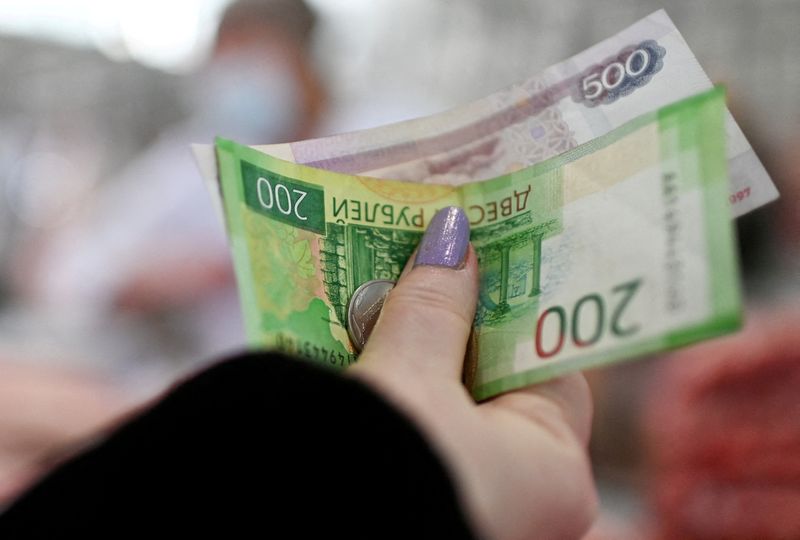Withstanding severe western trade sanctions against Kremlin, the Russian Ruble has hit a seven-year high against the U.S. dollar.
What Happened: On Wednesday, the Ruble had hit 52.3 to the dollar — its most substantial level since May 2015. On Friday, it was trading at 53.5 to the dollar in Moscow, which is still better than how it performed in the last five years.
That number is a world away from its plunge to 139 to the dollar in early March, when the European Union and the U.S. under President Joe Biden's administration imposed unprecedented sanctions on Russia amid the latter's invasion of Ukraine.
Kremlin has often cited the Ruble's stunning surge as "proof" that Western sanctions aren't working.
See Also: Vladimir Putin Says Trade With China, India, Brazil And South Africa Has Jumped 38% Amid Western Sanctions
Russian President Vladimir Putin said last week at the annual St. Petersburg International Economic Forum "the idea was clear: crush the Russian economy violently...They did not succeed. Obviously, that didn't happen."
How Did The Ruble Regain Its Value After The March Fall?
Days after Ukraine's invasion, when U.S. and E.U. rolled out sanctions against Kremlin — following the Ruble's initial tumble — Russia's central bank more than doubled the country's key interest rate to a whopping 20% from 9.5% earlier.
Since then, the Ruble's value has drastically improved and the country lowered its interest rate three times to reach 11% in late May. The currency recently got so strong that the country is trying all measures to tame the rampant currency, fearing that a strong Ruble would make Russia's exports less competitive.
Another reason fueling the Russian Ruble is the strikingly high energy prices, capital controls and sanctions themselves.
European Union has been buying billions of dollars worth of Russian energy per week from Russia, which is the world's largest exporter of gas and the second-largest exporter of oil in the world.
On one side, while the E.U. is trying to punish Russia with sanctions — it is also fueling Moscow's war chest by sending more money to Russia in oil, gas and coal purchases.
Furthermore, the Brent crude prices, which are almost 60% higher than they were at the same time last year, are helping Russia in making a record profit, despite the unprecedented western sanctions. International Brent crude price, which was $95.42 per barrel on February 24, now stood at $106.57, after pairing some gains in the recent days.
Read Next: How Vladimir Putin's Russia Is Transporting Oil To India Via Dubai, Skirting Western Sanctions
© 2022 Benzinga.com. Benzinga does not provide investment advice. All rights reserved.
Read at Benzinga
